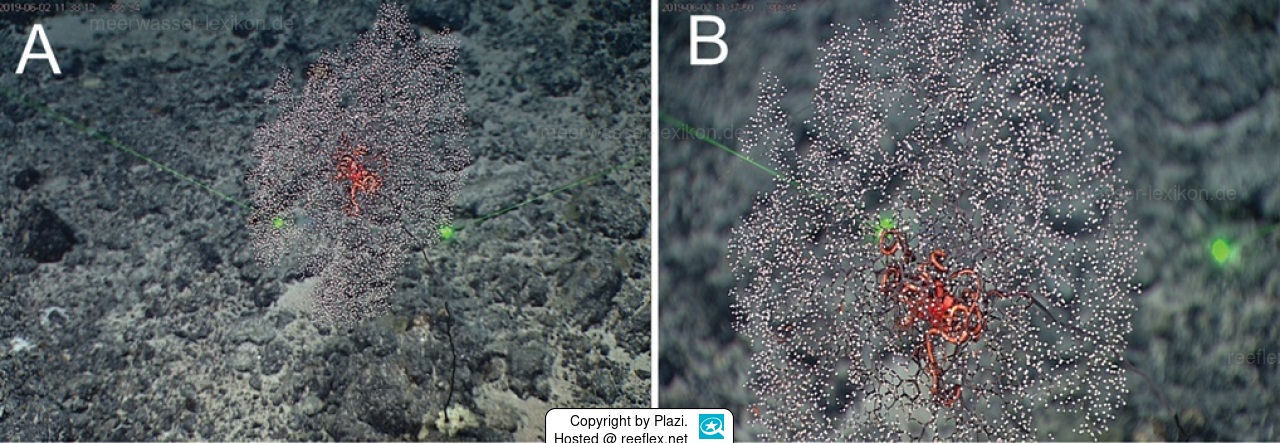Info
Metallogorgia macrospina could be collected from three seamounts, tentatively designated M5, M7, and M8, on Caroline Ridge, West Sumatra, Western Pacific.
The deep-water gorgonian forms a single long main stem with a very large umbrella on which large numbers of polyps are settled, trapping forageable plankton from the current.
Also of interest is the community with brittle stars, which find shelter from predators in the branches of the gorgonian and a platform above the seafloor to feed on suspended particles and suspensions.
Studies of the gorgonian have shown that Metallogorgia macrospina has no nematozooids.
Note about the photos:
The photos show green laser dots that are exactly 33cm apart, this helps to capture the dimensions of the polyp occupied screen.
Unfortunately we cannot find any further information about the total length of the coral incl. main stem.
The deep-water gorgonian forms a single long main stem with a very large umbrella on which large numbers of polyps are settled, trapping forageable plankton from the current.
Also of interest is the community with brittle stars, which find shelter from predators in the branches of the gorgonian and a platform above the seafloor to feed on suspended particles and suspensions.
Studies of the gorgonian have shown that Metallogorgia macrospina has no nematozooids.
Note about the photos:
The photos show green laser dots that are exactly 33cm apart, this helps to capture the dimensions of the polyp occupied screen.
Unfortunately we cannot find any further information about the total length of the coral incl. main stem.







 Plazi
Plazi


